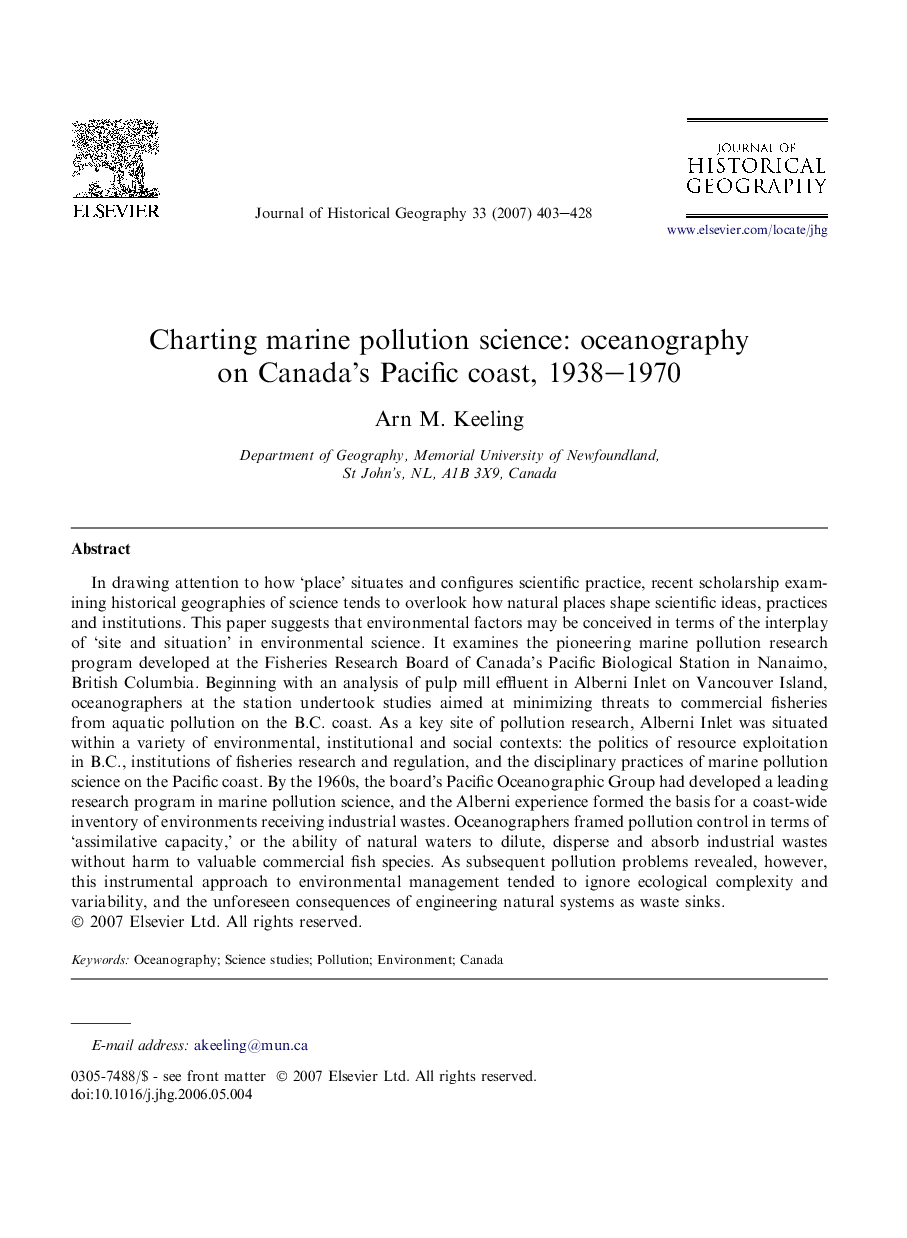| Article ID | Journal | Published Year | Pages | File Type |
|---|---|---|---|---|
| 1039597 | Journal of Historical Geography | 2007 | 26 Pages |
In drawing attention to how ‘place’ situates and configures scientific practice, recent scholarship examining historical geographies of science tends to overlook how natural places shape scientific ideas, practices and institutions. This paper suggests that environmental factors may be conceived in terms of the interplay of ‘site and situation’ in environmental science. It examines the pioneering marine pollution research program developed at the Fisheries Research Board of Canada's Pacific Biological Station in Nanaimo, British Columbia. Beginning with an analysis of pulp mill effluent in Alberni Inlet on Vancouver Island, oceanographers at the station undertook studies aimed at minimizing threats to commercial fisheries from aquatic pollution on the B.C. coast. As a key site of pollution research, Alberni Inlet was situated within a variety of environmental, institutional and social contexts: the politics of resource exploitation in B.C., institutions of fisheries research and regulation, and the disciplinary practices of marine pollution science on the Pacific coast. By the 1960s, the board's Pacific Oceanographic Group had developed a leading research program in marine pollution science, and the Alberni experience formed the basis for a coast-wide inventory of environments receiving industrial wastes. Oceanographers framed pollution control in terms of ‘assimilative capacity,’ or the ability of natural waters to dilute, disperse and absorb industrial wastes without harm to valuable commercial fish species. As subsequent pollution problems revealed, however, this instrumental approach to environmental management tended to ignore ecological complexity and variability, and the unforeseen consequences of engineering natural systems as waste sinks.
